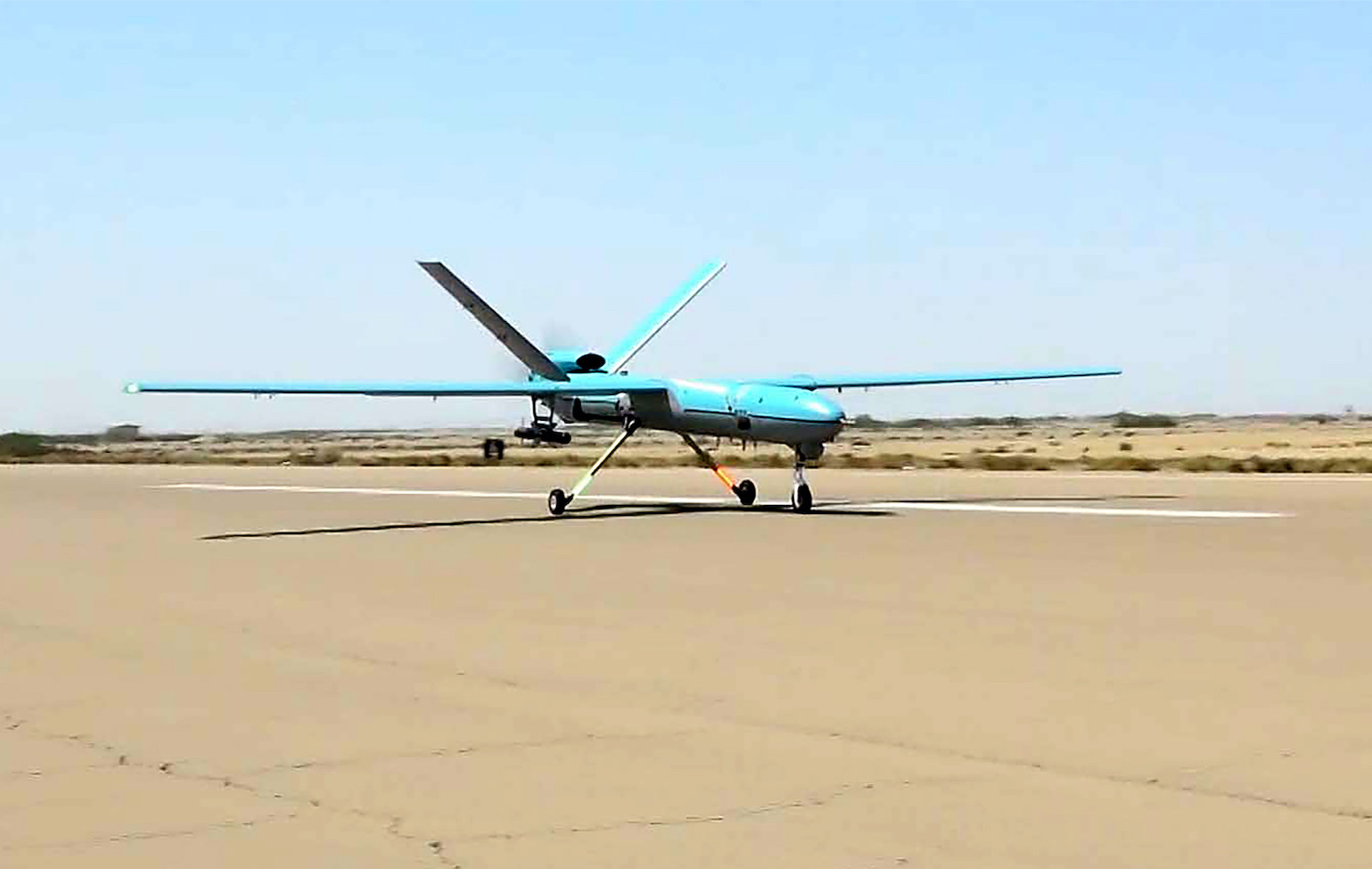
Pentagon planners had been spotting Iran-backed drone attacks targeting U.S. troops for weeks before the strikes.
President Joe Biden ordered U.S. airstrikes to be carried out early Monday against three facilities on the Iraq-Syria border suspected of aiding Iran-backed militias that had been launching drone and rocket attacks on bases housing U.S. service members in Iraq.
A U.S. defense official, speaking on condition of anonymity to discuss a sensitive operation, said F-15 and F-16 fighter jets conducted the strikes with a mix of precision-guided munitions. The U.S. Defense Department said each strike hit its intended target but that it was still assessing the damage, including the possibility of enemy casualties. Biden, who ordered the strikes under his Article 2 constitutional authority for the protection of U.S. troops who have faced attacks from Iran-backed forces, did not audibly respond to shouted questions about the strikes after returning to the White House from Camp David on Sunday night.
The latest strikes highlight the growing threat to U.S. forces and their allies from Iran-backed militias in the region and the increased clout that Tehran has built through its proxy forces in Iraq and Syria. They could also throw a wrench into tenuous talks between the Biden administration and Iran to revive the 2015 nuclear deal.
The Pentagon said it has been tracking an uptick in attacks by Iranian proxy groups for weeks. Cmdr. Jessica McNulty, a Pentagon spokesperson, said Iran-backed militias have conducted at least five attacks against facilities used by the United States and the coalition in Iraq since April.
You can support Foreign Policy by becoming a subscriber.
The defense official added that the sites hit were command and control and logistics hubs for piloting unmanned aerial vehicles, known as UAVs. John Kirby, the Pentagon’s top spokesperson, said the Iran-backed militias Kataib Hezbollah and Kataib Sayyid al-Shuhada stored weapons and ammunition at the facilities to conduct attacks against U.S. troops.
Concern over Iran’s new capabilities is increasingly percolating up to the highest levels of the military. U.S. Central Command chief Gen. Kenneth McKenzie Jr. called the growing threat from drones the “most concerning tactical development since the rise of the improvised explosive device in Iraq” at an event in February. McKenzie also expressed worries that the proliferation of cheap drones could erode the U.S. advantage in aerial surveillance and targeting.
“The technology of UAVs is advancing rapidly, more than our ability to defend ourselves against them,” said Mick Mulroy, a deputy assistant secretary of defense for the Middle East during the Trump administration and now an ABC News analyst. “The U.S. needs to focus on this threat as they did the IED threat in Iraq.” During the Iraq War, the Pentagon set up the Joint IED Defeat Organization to deal with the proliferation of roadside bombs, and it has since been rebranded to cover a larger remit that includes drones.
The intensifying threat comes at a particularly tricky time for the Pentagon, with Biden still trying to pivot to Asia, which could potentially divert more military bandwidth and resources. The Wall Street Journal reported this month that the Pentagon had approved the move of eight Patriot missile batteries, mostly stationed in Saudi Arabia, out of the region and sought to draw down its presence of 2,500 U.S. troops in Iraq. It also comes as the U.S. diplomatic offensive to kick-start a new nuclear pact with Iran faces an uncertain future with hard-liner Ebrahim Raisi set to come to power in Tehran.
The ubiquity of cheap, off-the-shelf drones is beginning to offer an ersatz air force for countries that can’t afford it, U.S. Army officials said after Azerbaijan swept through Armenian defenses during the war in Nagorno-Karabakh last year. And some former officials think the United States needs to do more to deal with the problem, even as the Pentagon is focused on acquiring high-tech weapons for a possible fight with China.
The Pentagon put out a new counter-drone strategy in January, and Tom Karako, a missile defense expert at the Center for Strategic and International Studies, said the Defense Department is taking an interest in directed energy and other weapons that can fry small drones at short range. U.S. forward operating bases in the region also have elevated sensors to deal with artillery attacks that could be repurposed to deal with drones, he added. “We have to see these things before we can comprehensively air defend against them,” Karako said.
The latest strikes could also spark a tricky political battle for the Biden administration in Washington, where a bipartisan group of lawmakers has campaigned for years to rein in the president’s ability to conduct military action without prior congressional approval.
In recent weeks, with Biden’s blessing, Congress repealed the 2002 Authorization for Use of Military Force Against Iraq—the bill that opened the door for nearly two decades of operations there—in a sign that lawmakers are looking to establish greater oversight over military operations. The left flank of the Democratic Party earlier rebuked Biden for not seeking congressional approval before launching strikes against Iranian proxies in February.
One powerful progressive lawmaker and key Biden ally in the Senate voiced concern about the lack of congressional input in Washington’s escalating pace of strikes and counterstrikes against Iranian proxies in the region.
Democratic Sen. Chris Murphy, who sits on the Senate Foreign Relations Committee, said while he trusts “inherently the national security instincts of the White House,” he is concerned the strikes against Iranian proxies “are starting to look like what would qualify as a pattern of hostilities under the War Powers Act.”
“Both the Constitution and the War Power[s] Act require the president to come to Congress for a war declaration under these circumstances,” he said. Murphy added that he expected to be briefed on Monday by the White House about the strikes.
Jack Detsch is Foreign Policy’s Pentagon and national security reporter. Twitter: @JackDetsch
Robbie Gramer is a diplomacy and national security reporter at Foreign Policy. Twitter: @RobbieGramer




